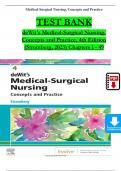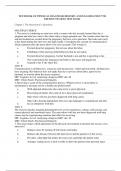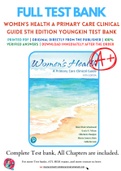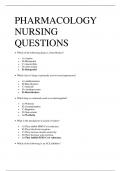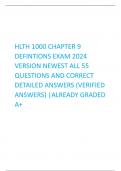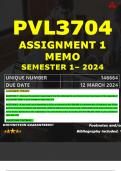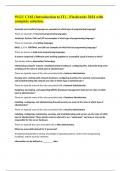Exam (elaborations)
TEST BANK For Dewit's Medical-Surgical Nursing, Concepts and Practice, 4th Edition (Stromberg, 2023), Verified Chapters 1 - 49, Complete Newest Version
TEST BANK For Dewit's Medical-Surgical Nursing, Concepts and Practice, 4th Edition (Stromberg, 2023), Verified Chapters 1 - 49, Complete Newest Version TEST BANK For Dewit's Medical-Surgical Nursing, Concepts and Practice, 4th Edition (Stromberg, 2023), Verified Chapters 1 - 49, Complete Newest Ver...
[Show more]
